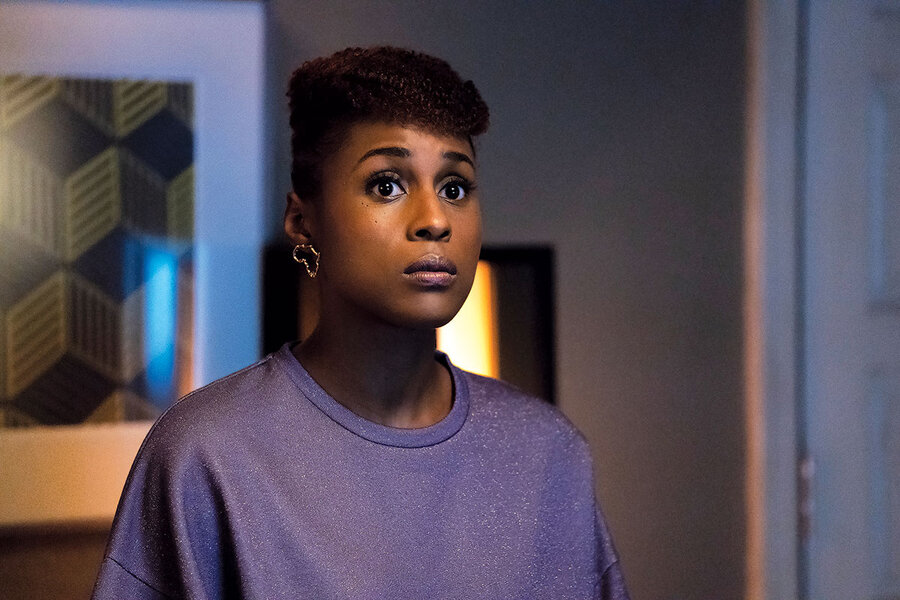Will networks continue to show interest in adapting web series by people of color?
Before Issa Rae was nominated for an Emmy Award earlier this fall for HBO’s “Insecure,” her career began online with a series titled “The Misadventures of Awkward Black Girl.” The nod for Ms. Rae is only the latest accolade for “Insecure,” which has been praised for its depiction of life as a black woman in Los Angeles and recently concluded its third season. As web creators continue to tell authentic, compelling stories about what it is like to live as a person of color, will networks show interest, as HBO did with “Insecure,” in adapting their stories, particularly as consumers demonstrate their interest in more diverse programs?
“[Online content creators] are cultivating their own audiences that the networks want for the future because indie creators are not only making great stories but also making a new market,” says Dr. Aymar Jean Christian, a communications professor at Northwestern University who leads Open TV, a research project and platform for intersectional television. “They are an ideal collaborator for corporations that need diversity for a very complicated market.” HBO, for one, has already continued on this path with an adaptation of the web series “Brown Girls” in development. (“Brown Girls” is funded by Dr. Christian’s Open TV.) Meanwhile, BET turned to web creators in 2015 when it aired web series from digital network Black&Sexy TV.
Ross Brown, program director for the Master of Fine Arts in writing and contemporary media at Antioch University in Santa Barbara, Calif., believes we will “absolutely” see more web series created by people of color being adapted by traditional TV networks. “In terms of diversity, I think it’s great because there’s a world out there on the internet where networks can go and find talent...,” Professor Brown says. “As television has fragmented, that also opens up the door for more diverse voices.”
Since the second year of all-white acting nominees at the Oscars in 2016, there has been pressure on Hollywood to increase diversity in television and film. According to a recent study by UCLA, white actors’ share of roles in scripted cable shows for the 2015-16 TV season came in at 74.6 percent. In broadcast, white actors’ share of roles was 66 percent.
In addition to making their programs more diverse, bringing these creators into the fold could give Hollywood the ability to air authentically told stories from people of color – stories to which those creators say everyone can relate.
On “Geeta’s Guide to Moving On,” a web series from creator and star Puja Mohindra, protagonist Geeta’s Indian “aunties” provide her with guidance and support. “People see their mothers in those ladies...,” Ms. Mohindra says. “I can’t tell you the amount of times someone has come up to me and said ‘That’s like my tía,’... or I’ve had many Jewish people come up to me and say, ‘Oh, we have ladies like that!’ So I feel like everybody has their own version of the ‘aunties.’ ”
But is it be possible for these web series to keep their authenticity? “The degree of freedom a creator has once they get to Hollywood depends on a range of factors, including the amount of credits they had on studio projects before the sale, the overall profile as an artist, the power of the series’ executive producer, the nature/style of the web series and the brand/culture of the network,” Christian says in an email.
This can deter creators from wanting their work to go mainstream. Ricardo Gamboa, co-director and writer of the web series “Brujos,” says the show is committed to not taking any money from private investors or corporations to maintain creative control. But Mohindra sees these new opportunities as positive even if keeping qualities of a show can be uncertain. “The willingness for Hollywood wanting to diversify is a great thing, and I think we are in a really exciting time that Hollywood is interested in doing that,” she says. “And the challenge to it, I think, is building that bridge of understanding and empathy and preserving the authenticity to the story ... [but] that all depends on the hands it ends up [in].”
Staff writer Molly Driscoll contributed to this report.







